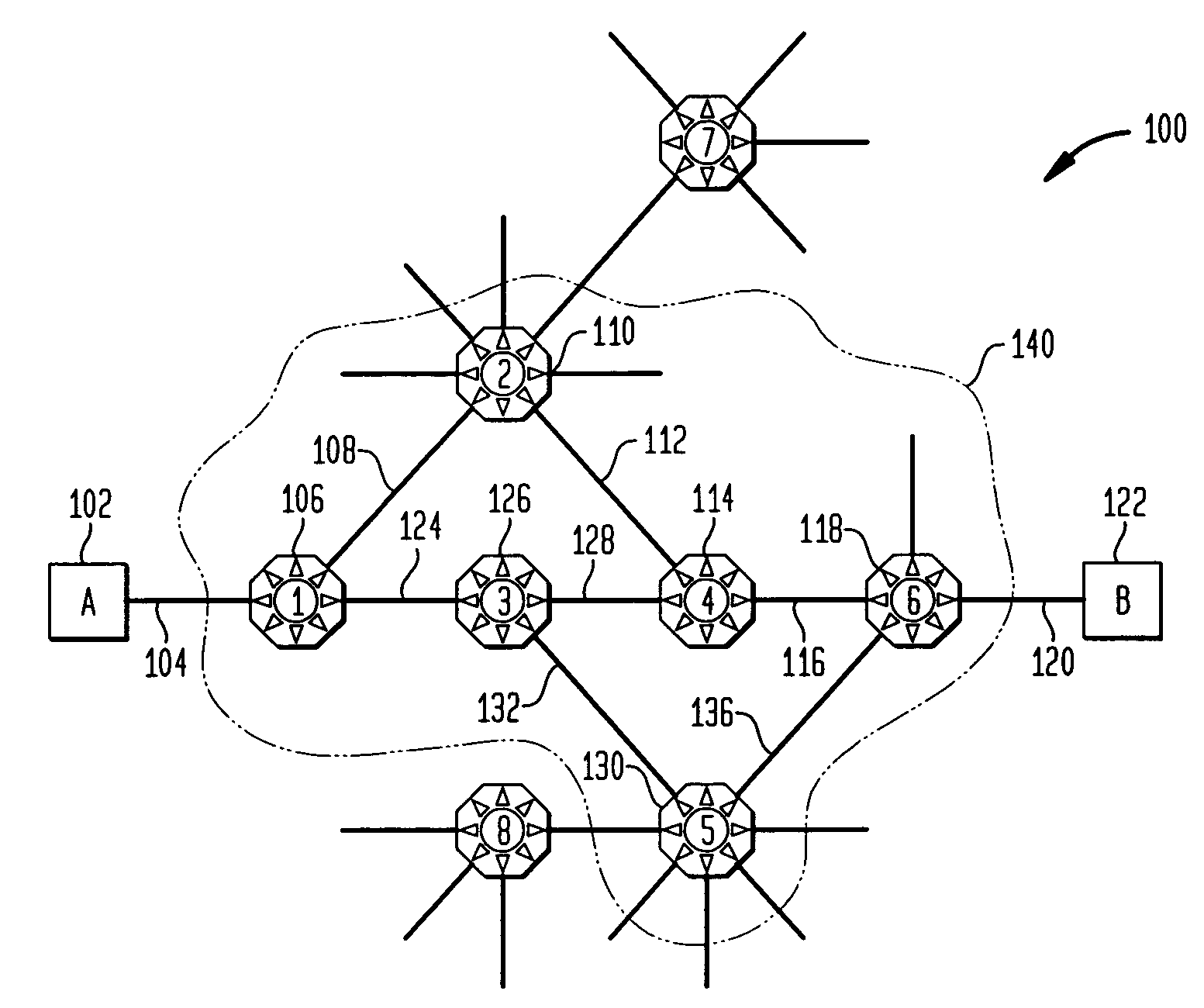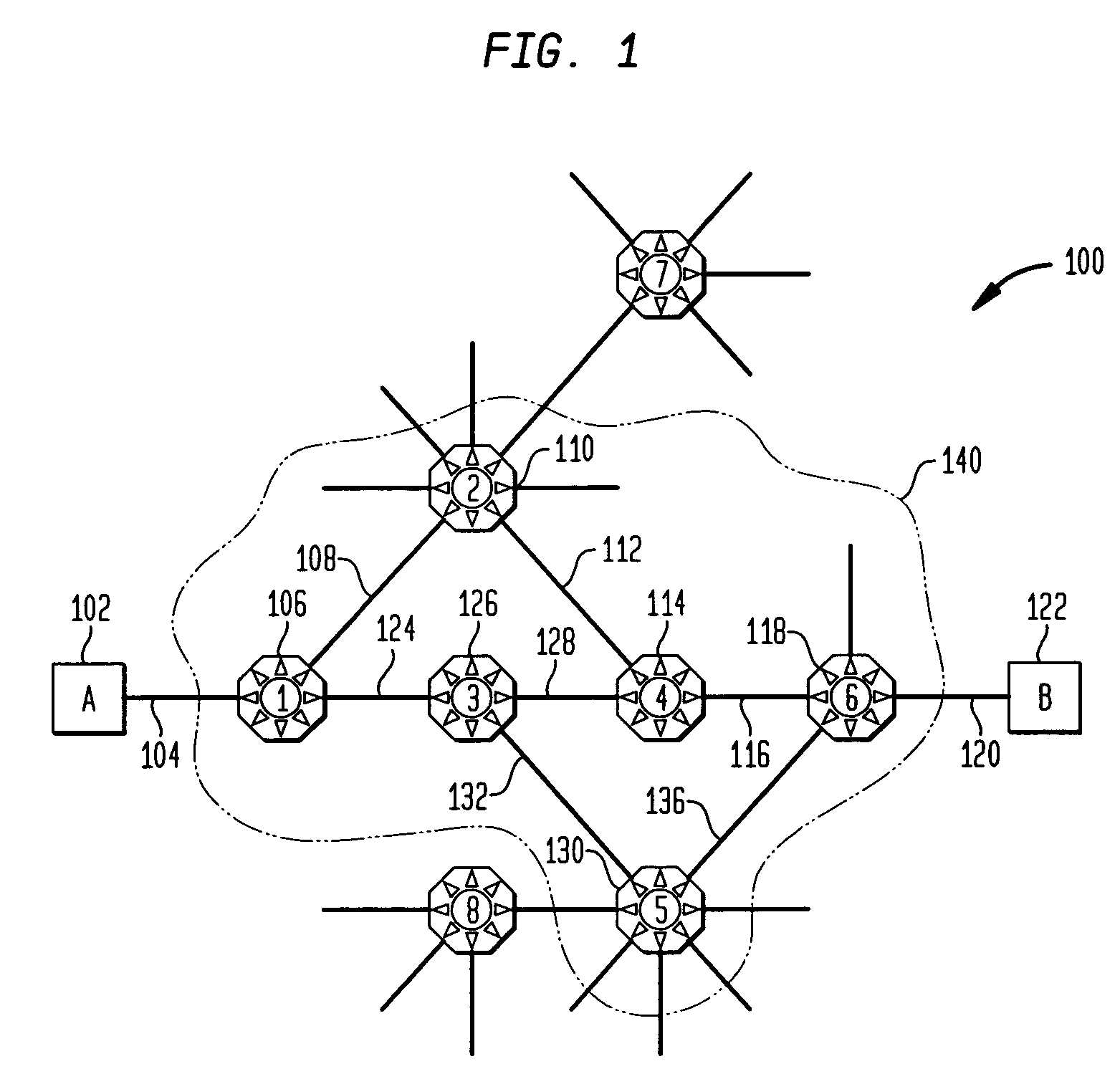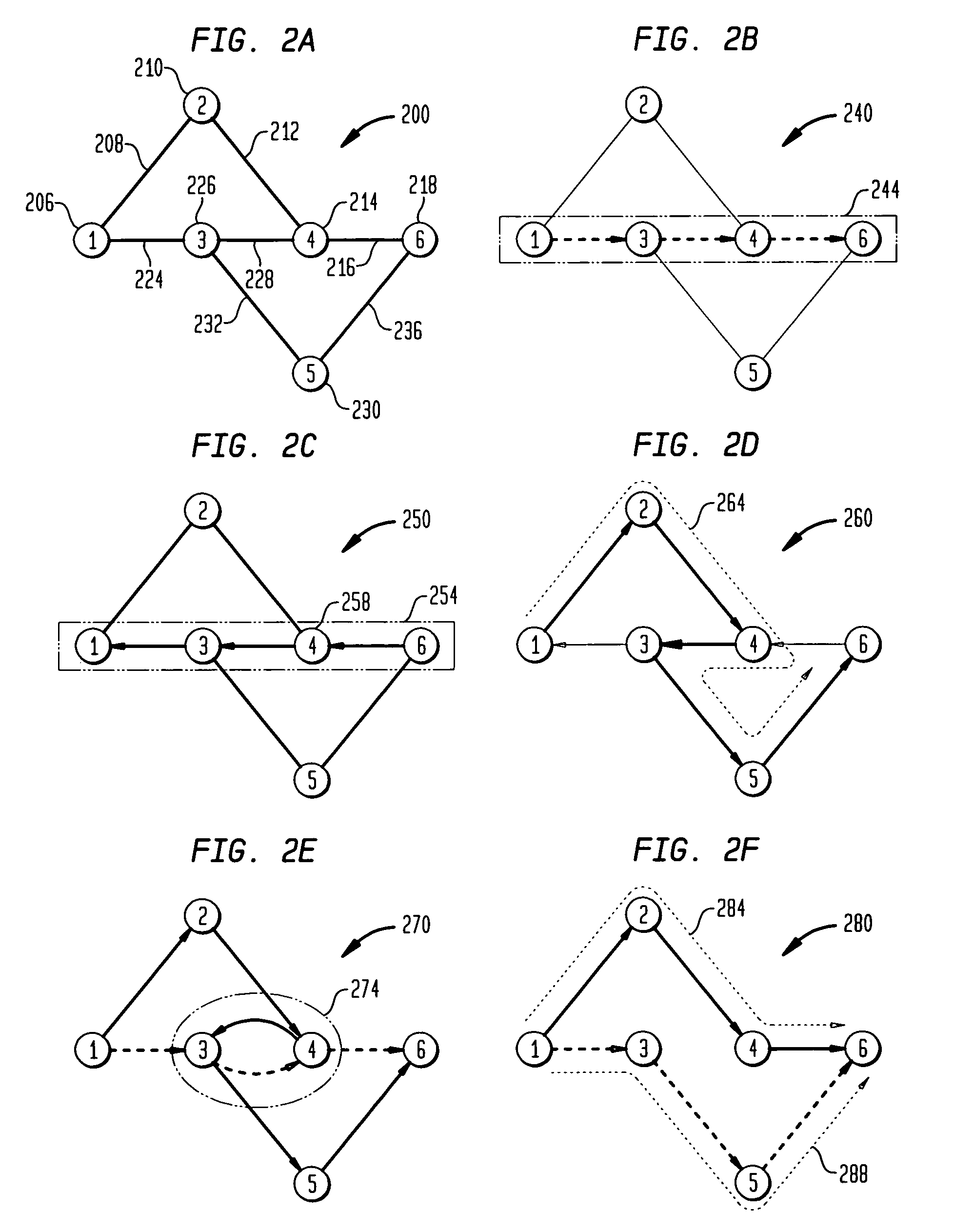Methods of network routing having improved resistance to faults affecting groups of links subject to common risks
a network routing and fault technology, applied in the field of network routing, can solve the problems of increasing the size and complexity of the communication network, difficulty in routing paths between numerous source and destination nodes that meet various constraints, and insufficient use of suurballe-type techniques
- Summary
- Abstract
- Description
- Claims
- Application Information
AI Technical Summary
Benefits of technology
Problems solved by technology
Method used
Image
Examples
Embodiment Construction
[0024]FIG. 1 shows a physical network of connection nodes connected by links. In FIG. 1, the physical network is embodied as an optical network made up of optical switch nodes connected by optic fiber links in a general mesh topology.
[0025]Links 104 and link 120 are considered to be standard interface connections, which may be optical connections, to access node devices A 102 and B 122, respectively. The links, such as 108, 112, 116, 124, 128, 132, and 136, are considered to use optical fibers that may carry multiple optical channels. The nodes 106, 110, 114, 118, 126, and 130 are optical switch nodes that can switch an incoming light path to an outgoing light path. Since optical switches are designed to be redundant, the typical type of failure that occurs in optical networks is damage to the fiber optic lines.
[0026]A particular example of a routing problem is the problem of finding a disjoint pair of paths in FIG. 1 between node 1106 and node 6118. The physical network, represente...
PUM
 Login to View More
Login to View More Abstract
Description
Claims
Application Information
 Login to View More
Login to View More - R&D
- Intellectual Property
- Life Sciences
- Materials
- Tech Scout
- Unparalleled Data Quality
- Higher Quality Content
- 60% Fewer Hallucinations
Browse by: Latest US Patents, China's latest patents, Technical Efficacy Thesaurus, Application Domain, Technology Topic, Popular Technical Reports.
© 2025 PatSnap. All rights reserved.Legal|Privacy policy|Modern Slavery Act Transparency Statement|Sitemap|About US| Contact US: help@patsnap.com



